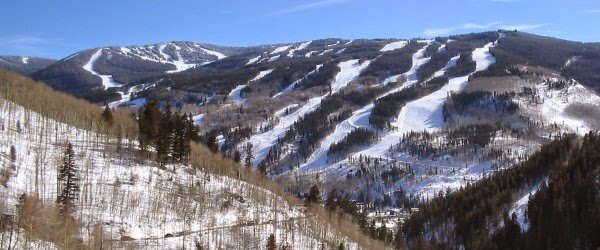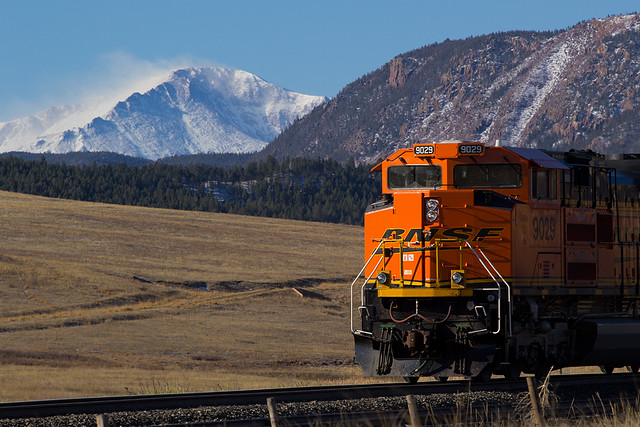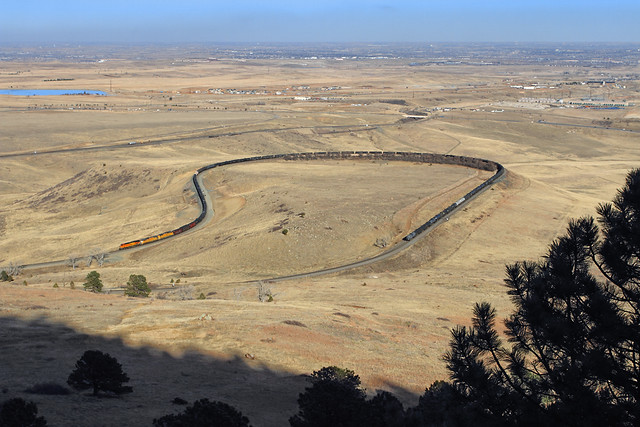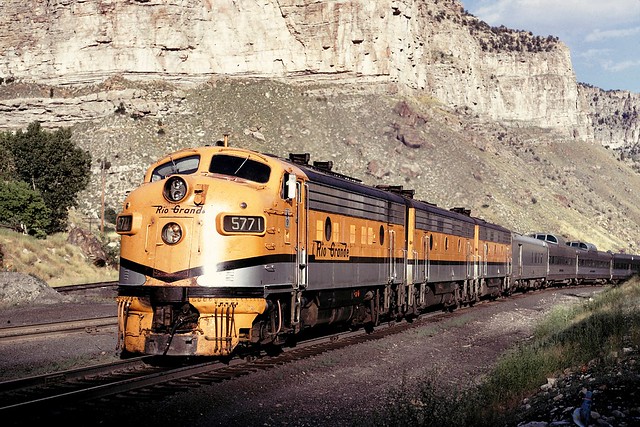"Is it possible to get from Vail to Denver using old rails?"
 |
| Vail ski area, photo by David Benbennick |
Hi Tim!If you have a question for the editor, please use the form in the near column or send an e-mail to editor@corailroads.com◊
Good to hear from you via the site! I'd be happy to answer your question and if I don't quite answer your question or you have follow-up questions, please let me know!
First, a qualification. You don't mention the means you'd be traveling so I'll be just talking routes, not actual access to travel the routes. Any properties as well as your legal access to them are yours to discover and arrange, meaning none of what I say should be taken as an endorsement to pursue any activity, legal or otherwise.
Colorado's main expansion and consolidation of railroads happened between 1872 and 1917. Skiing, Vail's reason for being, did exist in a primitive way toward the end of that period, but didn't take off until after WW2. Vail as a town isn't much older than I am, incorporated in 1966, the ski area having been there for since 1962. So, if there was ever rail service near Vail, it would have been by coincidence, not by design of serving Vail.
The route over Vail Pass is the most direct candidate for a rail route to Denver. But it was completed in 1940 when the original US 6 was pushed through to Utah on it's way from Massachusetts to California. The grades over Vail Pass, at present, would be pushing the limits of rail technology. It would be very difficult without changing the route or the design of conventional rail travel.
The other direction out of the Vail Valley comes out at where Gore Creek flows into the Eagle River which is followed by the Tennessee Pass Route of the Rio Grande, the railroad that inspired the graphics for Colorado Railroads. It would be possible to follow that route all the way over Tennessee Pass and down the Arkansas River to Pueblo. That route has been out of service since 1997 (18 years this fall). Pueblo to Denver has been in active rail service since 1872, or thereabout. At present, Union Pacific owns both routes, in whole for TP and in part for the Front Range.
If you are interested in older routes, or in narrow gauge railroads that served nearly all the towns except Vail, I can go into further detail.
Keep Exploring!
Steve




















.JPG)